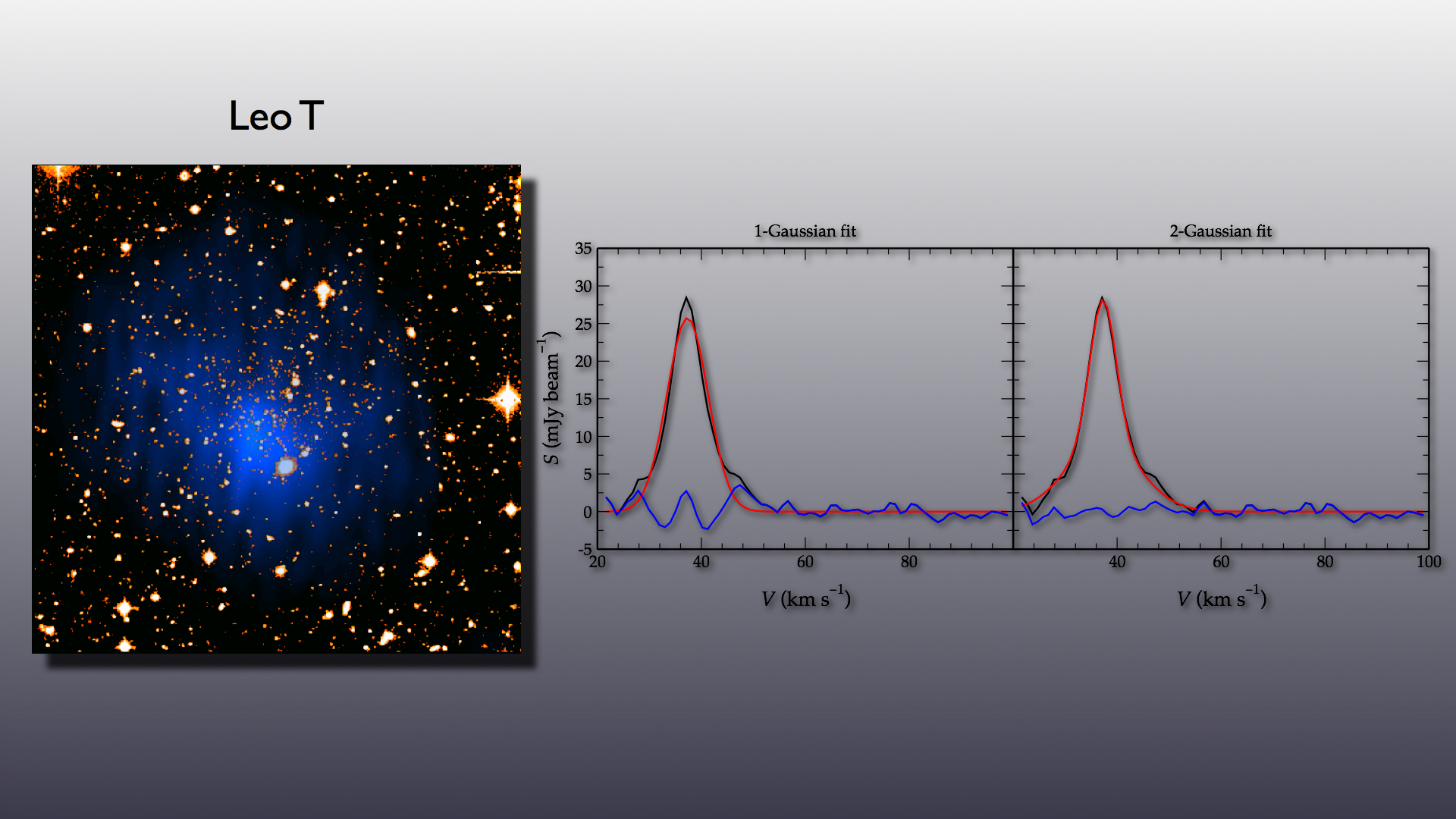Daily Image
02-10-2007Small galaxies are cooler than people think
| Submitter: | Tom Oosterloo |
| Description: | Current theories predict that it is very hard for stars to form in small galaxies. Because the galaxies are small, their gravitational field is not very strong and they can only weakly hold on to whatever is in the galaxy. This means that as soon as a few stars form, their stellar winds can easily blow the rest of the gas out of the galaxy. Because stars form from gas, such a blowout would mean that no other stars can form. Another possible effect is that in small galaxies, it is hard for the gas to cool to low temperatures. Such cooling is necessary for stars to form because if the gas is too warm, its heat can prevent the collapse of the gas cloud. Because of the weak gravitational fields, the gas densities remain quite low and because cooling is more efficient in denser gas, the low-density gas clouds may never cool enough for them to collapse. Recent WSRT observations may suggest that current theories could be quite wrong and that it is not that hard for stars to form in small galaxies as people think. The figure shows results from these observations of a small galaxy named Leo T. Leo T is a companion galaxy to our own galaxy. It is very small, its size is about 0.001% of that of the Milky Way. One reason why Leo T is interesting is that it is the smallest galaxy known where stars have recently formed. The other reason is that Leo T is extremely gas rich, so plenty of stars could in principle still form. The picture on the left shows the neutral gas as detected with the WSRT (blue) superposed on an optical image of Leo T. The image clearly shows the smallness of Leo T, it looks like just a small group of stars and is hardly recognisable as a galaxy. Two important results have come from the WSRT observations. One result is that there are no signs whatsoever of the gas outflows that are predicted to be caused by the young stars. The second result is that the temperature structure of the gas in Leo T seems to be the same as in much bigger galaxies. The plot on the right shows a spectrum (black line) of some of the gas in Leo T. In general, the width of a spectrum tells something about the temperature of the gas. On the left, the spectrum is compared with what is expected for gas of a few thousand degrees (and that is much to warm for stars to start forming). The blue line gives the differences between the data and the model and it is clear that these differences are quite large. On the right, the model assumes that, next to the warm gas, there is also gas of only 100 degrees (and that is cold enough for star formation to begin). The blue line here shows that this model fits much better. So it looks like that gas in Leo T cools in the same way as in bigger galaxies.... These results have been written down in a paper submitted to the Monthly Notices of the Royal Astronomical Society. |
| Copyright: | Astron 2007 |
| Tweet |  |
